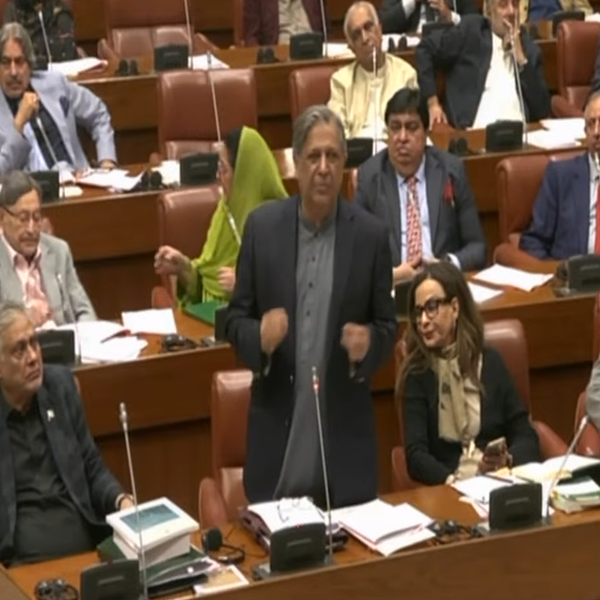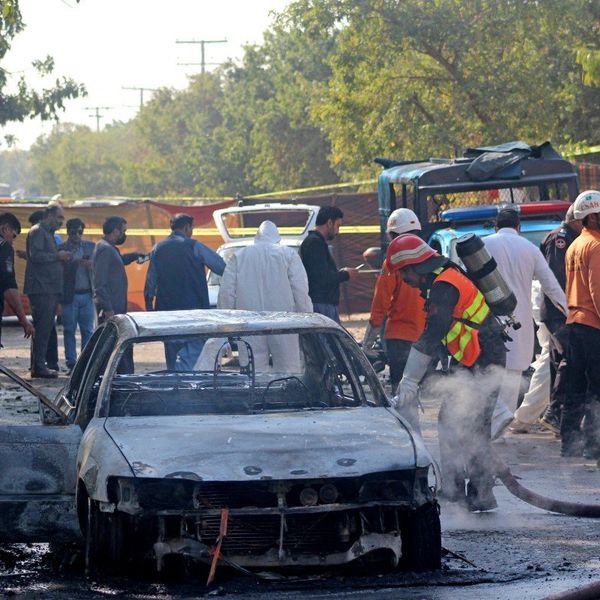Pakistan battles torrential rains and devastating floods with millions at risk
Kamran Khan says the floods highlight Pakistan’s vulnerability to climate change and insufficient long-term disaster preparedness
News Desk
The News Desk provides timely and factual coverage of national and international events, with an emphasis on accuracy and clarity.
Half of Pakistan is currently under water, with torrential monsoon rains and relentless flooding wreaking havoc across the nation.
Punjab is bearing the brunt of the disaster, facing the worst floods in its history - a situation experts attribute to long-standing neglect in building dams and modern water infrastructure.
Meanwhile, Sindh braces for incoming floodwaters, and Khyber Pakhtunkhwa is still struggling to recover from destructive torrents that have already caused massive devastation.
In the latest episode of On My Radar, Kamran Khan said that the floods are a stark warning of Pakistan’s vulnerability to climate change and a lack of long-term disaster preparedness.
He emphasized that the situation in Punjab and Khyber Pakhtunkhwa underscores the urgent need for national climate policy and stronger infrastructure to withstand extreme weather events.
The ferocious monsoon waves and flash floods have claimed over 800 lives countrywide. In Punjab, the swelling Sutlej, Ravi, and Chenab rivers have swept away farmland, livestock, and entire villages. In more than 2,100 villages, crops of rice, cotton, wheat, maize, vegetables, and other staples have been destroyed, leaving farmers helpless as years of their labor vanish under water.
Millions displaced as urban and rural areas submerge
Urban areas have not been spared either. Major housing societies in Lahore, Sialkot, Multan, and other cities are inundated. In Lahore’s Thokar Niaz Beg area, floodwaters breached the “Park View City” luxury development, leaving thousands of families stranded and exposing the limits of urban planning in the face of nature’s fury.
Meteorological authorities recorded over 360 millimeters of rainfall in Sialkot within 24 hours - a record-breaking level not seen in the past 49 years. The Provincial Disaster Management Authority reports that more than 2 million people in Punjab have been affected, with around 760,000 relocated to safe shelters. Over 1.2 million people remain exposed or homeless.
All of Pakistan’s dams and reservoirs are already at capacity, while the monsoon season is expected to continue until the end of September. High-level flooding in the Sutlej, Ravi, and Chenab rivers is projected to persist at least until September 3, with floodwaters likely to enter Sindh by September 4-5, threatening up to 1.65 million people across 15 districts near Guddu and Sukkur barrages.
Khyber Pakhtunkhwa is still under severe rainfall and has not fully recovered from the catastrophic floods earlier this month, which claimed 406 lives due to landslides and flash floods.
Agriculture and economy at risk as crops and livestock wash away
The floods are not only a human tragedy but also a financial catastrophe. Livestock, vital to the rural economy, have drowned by the hundreds of thousands. Farmers and exporters warn that the impact on agriculture and livestock sectors could be devastating.
Massive rice crop losses will push prices higher for local consumers and weaken Pakistan’s competitiveness in global markets. The Pakistan Cotton Ginners Association reports that 800,000 acres of cotton have been destroyed, leading to a sharp decline in supply for ginning units.
This loss threatens the textile industry, which accounts for more than 50 percent of the country’s exports - occurring at a time when Pakistan had secured a 19 percent tariff concession from its largest export market, the United States.
The disaster comes when Pakistan’s fragile economy was showing signs of stabilization, with inflation around 4 percent. Experts warn that delays in wheat sowing, crop destruction, reduced rice exports, and increased cotton imports could push inflation higher and strain the economy further.
While India is also facing floods, some voices in Pakistan link the severity of the floods to additional water releases from India. Regardless of the cause, this calamity is a stark reminder of the urgent need to address climate change and invest in disaster preparedness.
Pakistan faces multiple environmental emergencies with deforestation, shrinking forests, accelerated glacier melt, and destructive rains increasingly displacing communities and making urban flooding a regular threat.
The country must invest in large dams and modern water infrastructure and adopt long-term strategies to ensure that future generations, the economy, and the nation itself are not at the mercy of increasingly extreme weather.











Comments
See what people are discussing